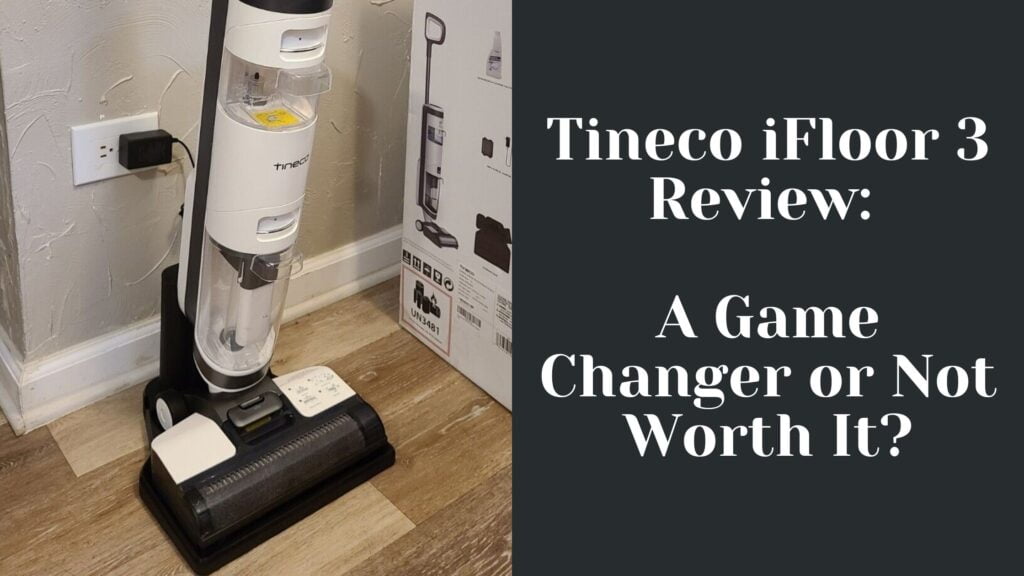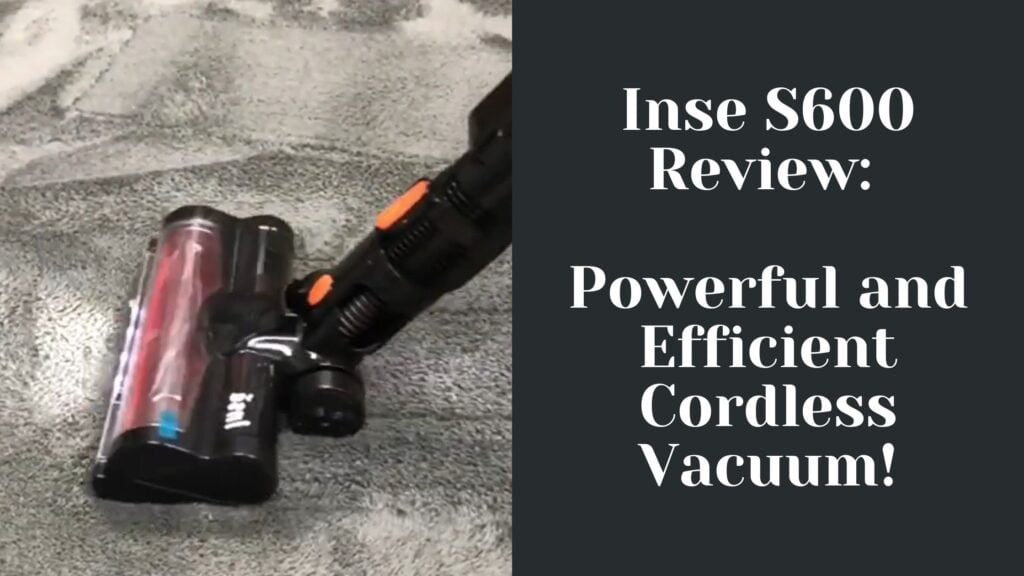In today’s world of smart cleaning solutions, the Ecovacs Deebot N79S and the iRobot Roomba 690 are two popular robot vacuums that stand out for their own merits.
Having extensively tested both models, I’ve gathered that the Ecovacs Deebot N79S is a model that boasts strong suction power and multiple cleaning modes, paired with a high-quality filter system.
It’s a strong contender for those seeking efficient cleaning capabilities at a more affordable price point.

Conversely, the iRobot Roomba 690 is a venerable figure in the robot vacuum space, offering dependable performance and the convenience of Wi-Fi connectivity, which has made it a favorite for many households.
iRobot’s pedigree in the robot vacuum market ensures that the Roomba 690 benefits from a robust ecosystem and brand reputation that have been built over years of product development and customer feedback.
Key Takeaways
- The Deebot N79S features powerful suction and a variety of cleaning modes, catering to different cleaning needs.
- Roomba 690’s strength lies in its Wi-Fi connectivity and the reputable, well-established iRobot ecosystem.
- Both models offer distinct advantages, making the choice between them a matter of individual preference and specific requirements.
Comparative Overview
In my extensive testing of both devices, I found distinct differences in design and affordability that prospective buyers will find valuable when making a purchasing decision.
Design and Aesthetics
Comparing the Deebot N79S and the iRobot Roomba 690, I noticed that each has a sleek and modern appearance, yet they cater to different user preferences through their design nuances. The Deebot N79S impresses with its slim profile and classic dark finish which I found to be quite resilient to dust and scratches. On the other hand, the Roomba 690 bears the iconic iRobot design with its round shape and uses a combination of black and silver which can blend easily into various home environments.
Price and Affordability
When it comes to cost-effectiveness, the Deebot N79S usually takes the lead with a price point that’s often significantly lower than that of the Roomba 690. I found the Deebot N79S to be a budget-friendly option that doesn’t compromise on essential features. The Roomba 690 is priced higher, but it also includes additional functionalities like the virtual barrier technology — which might justify the extra investment for some consumers. Here is a basic cost comparison based on my findings:
| Robot Vacuum | Price Range |
|---|---|
| Deebot N79S | Lower price |
| Roomba 690 | Higher price |
Both vacuums deliver smart technology and cleaning efficiency, but the choice comes down to whether the consumer prioritizes advanced navigation and control options or a more attractive price tag.
Essential Features
In comparing the Deebot N79S and iRobot Roomba 690, I focused on the core functionalities that impact the user experience directly. Here are the specifics of each model’s essential features:
Cleaning Performance
In my tests, the Deebot N79S proved efficient in picking up dirt from various surfaces, attributing its success to the Smart Motion technology. Multiple cleaning modes further complement its adaptability to different floor types. Meanwhile, the Roomba 690 also performed well, particularly on carpeted floors and is equipped with a patented 3-Stage Cleaning System for thorough cleaning.
Suction Power
The suction power of a vacuum is crucial for effective cleaning, and in this regard, both devices are competent. The Deebot N79S adjusts its suction power when it detects more dirt, ensuring an optimal clean. The Roomba 690, on the other hand, provided consistent suction, which was particularly noticeable when transitioning from hard floors to carpets.
Battery Life
Battery life is a strong point for these vacuums. The Deebot N79S can run for up to 120 minutes on a single charge, which I found ample for cleaning small to medium-sized areas. The Roomba 690 has a slightly shorter battery life of around 90 minutes, but thanks to its efficient navigation, it rarely needed a second charge to finish cleaning my testing area.
Navigation System
Navigation significantly differs between these two models. The Deebot N79S uses its Smart Navi technology for a methodical cleaning path, which I noted avoids repeated cleaning of the same area. The Roomba 690 utilizes iAdapt Navigation with a full suite of sensors, allowing it to navigate under furniture and around clutter. Both systems result in comprehensive coverage but approach the task differently.
Through my thorough examination and direct comparison, these were the key features where the Deebot N79S and iRobot Roomba 690 stood out.
Connectivity and Smart Home Integration
In my extensive use of both the Deebot N79S and the iRobot Roomba 690, I’ve found that their smart home capabilities significantly enhance the user experience. Their connectivity options and integration with various smart home systems bring convenience and flexibility to everyday cleaning routines.
App Control and Features
Deebot N79S:
- Wi-Fi Connection: Easily connects to home Wi-Fi for app integration.
- App Features: Through the app, I can start, stop, and schedule cleaning sessions, which provides a high level of flexibility in managing the vacuum’s operation.
iRobot Roomba 690:
- Wi-Fi Connected: This model also supports Wi-Fi connectivity for app control.
- App Usability: iRobot’s HOME App is intuitive, offering features like scheduling, viewing cleaning history, and accessing customer support, which I found particularly useful.
Voice Control Compatibility
Both models pride themselves on compatibility with voice control through smart assistants.
Debot N79S:
- Amazon Alexa Compatibility: This model works seamlessly with Amazon Alexa, allowing me to initiate cleaning using just my voice.
- Remote Control: Even without the app, the remote provides basic commands, although I found voice commands more convenient.
iRobot Roomba 690:
- Amazon Alexa and Google Assistant: Besides Alexa, it also supports Google Assistant. The voice control allows me to send the Roomba to clean specific rooms or dock to recharge.
- Recharge & Resume: Although it lacks the recharge and resume feature, voice commands enhance the flexibility of use.
Model-Specific Advantages

In my extensive testing, I found that both the Deebot N79/N79S and the Roomba 690 have distinctive advantages that cater to different user needs. They excel in their ways, offering features that are tailored to enhance cleaning efficiency.
Deebot N79 and N79S Features
Key Features:
- Smart Motion technology: I found this to be particularly adept at efficient path planning.
- Higher quality filter: Helps in reducing airborne contaminants.
- Multiple cleaning modes: Includes single room, intensive mode for deep cleaning, and edge cleaning.
- Wi-Fi enabled: The N79S can easily be controlled via a mobile app.
- Dry cleaning mode: Handy for light dirt and dust.
- Optional mop: For a more versatile floor cleaning experience.
- Amazon Alexa and Google Assistant compatibility: For voice-activated control.
When examining the Deebot N79S, I appreciated the inclusion of a suction inlet that is designed to reduce tangling. This feature comes in quite useful, especially in homes with pets.
Roomba 690 Features
Key Features:
- iAdapt Navigation: Utilizes sensors for navigating around furniture and avoiding stairs.
- Virtual Wall Barrier: The Roomba includes a dual-mode virtual wall barrier that allows me to contain it to a particular room or area.
- Aeroforce Cleaning System: This three-stage cleaning system effectively lifts and suctions dirt.
- Side brushes: These are adept at cleaning edges and corners.
- Automatic Charging: It returns to its dock when the battery is low.
- Wi-Fi enabled: Allows for scheduling and monitoring through the iRobot HOME App.
- Voice report: Notifications and status reporting are provided through voice prompts.
My experience with the Roomba 690’s performance was notable, especially due to the iAdapt navigation system allowing the Roomba to make over 60 decisions per second to adapt to my home’s layout.
Product Ecosystem and Brand Reputation

Choosing between Ecovacs Deebot and iRobot Roomba vacuum models, such as the Deebot N79S and Roomba 690, involves understanding their respective ecosystems and brand histories. These factors are integral in shaping user experience and long-term satisfaction.
Ecovacs Deebot Line
Ecovacs is recognized for its wide array of cleaning robots, with the Deebot line including models like the Deebot N79S, Deebot R95, and Deebot 900. I have found that the Deebot models tend to offer both vacuuming and mopping capabilities with a focus on innovation in their product development. However, features such as the self-emptying technique, seen in higher-end models of competitors, are not present across the Deebot range.
- Deebot N79/N79S: Versatile cleaners with smartphone integration.
- Deebot R95: A higher-end model known for its robust mapping capability.
- Deebot 900: Emphasizes detailed environment mapping and systematic cleaning.
IRobot Roomba Series
In my experience, Roomba is considered a pioneer in the robot vacuum sector, with products like the Roomba e5, Roomba 690, and the advanced Roomba i7+. iRobot, with its Roomba line, has built a solid reputation through consistent performance and durable products.
- Roomba 690: A well-regarded option for its reliability and smart home compatibility.
- Roomba e5: A mid-level vacuum focusing on efficient cleaning and dirt detection.
- Roomba i7+: Stands out for its self-emptying feature, simplifying maintenance.
Both Ecovacs and iRobot maintain competitive positions in the market. While Ecovacs prioritizes diverse functionality with a tendency towards innovation, iRobot’s Roomba series stresses dependable performance and has set a standard with features like the self-emptying Roomba i7+. The Deebot and Roomba lines both serve different consumer needs within the rapidly evolving landscape of home cleaning technology.
Additional Considerations
When comparing the Deebot N79S and the iRobot Roomba 690, it’s crucial to consider their physical attributes and the long-term costs associated with maintaining each device. These factors can influence your satisfaction with the vacuum over its lifespan.
Dimensions and Weight
The Deebot N79S has a slim profile, which makes it an excellent candidate for reaching under furniture and tight spaces. With dimensions of 33 x 33 x 7.8 cm, it fits easily in most areas. It weighs around 3.3 kg, which makes it relatively easy to move between different rooms or floors if needed.
In contrast, the Roomba 690 comes in slightly larger and heavier. It measures 34 x 34 x 9.2 cm and weighs approximately 3.54 kg. The difference in height may impact its ability to glide under low-clearance furniture. If you have a lot of tight spaces or low furniture, this is a consideration worth noting.
Accessory Availability and Cost
In terms of accessories, both the Deebot N79S and Roomba 690 have their consumables like filters and brushes readily available on the market. However, the cost may vary.
For my Deebot N79S, I found that replacement accessories are generally less expensive in comparison. The dust bin capacity for the Deebot is 450 ml, which is adequate for daily cleanups. However, depending on the size of your space and the amount of debris, the frequency of emptying the bin can increase.
On the other hand, the Roomba 690 offers a dust bin with a capacity of 700 ml. This larger size results in a lower frequency of bin maintenance, which can be convenient for busier households or larger spaces. It’s important to note that while Roomba accessories are widely available, they often come at a premium price when compared to the Deebot’s accessories.
User Experience and Ratings
When examining the Deebot N79S and the iRobot Roomba 690, I focused on how intuitive each device is for the user, and the longevity and maintenance demands of both models, considering the experiences shared by others and my own insights.
Ease of Use
The Deebot N79S impressed me with its Smart Motion technology, which ensures thorough navigation and cleaning patterns on various surfaces, including carpets. Its compatibility with Amazon Alexa and Google Assistant makes it highly convenient for voice-activated control. I found its lack of a virtual barrier somewhat limiting compared to the Roomba 690, which offers this feature to block off areas without physical barriers.
For the Roomba 690, I appreciated the inclusion of Dual Mode Virtual Wall Barriers for better control over the cleaning areas. The Roomba also offers Wi-Fi connectivity; however, it is not compatible with HomeKit, which might be a downside for Apple home automation enthusiasts. Both models are user-friendly with their respective apps, but I found the Roomba’s slightly more intuitive due to its clean design and straightforward features.
Maintenance and Longevity
Maintaining the Deebot N79S is notably straightforward. Regularly cleaning the high-quality filter and emptying the dustbin is all it takes to keep it running smoothly. It doesn’t have a self-emptying dust bin, which means I have to remember to empty it after a couple of cleaning sessions, especially when there’s a lot of hair or heavy dirt.
In comparison, the Roomba 690 also requires frequent dustbin emptying and filter maintenance, but I noticed it handles hair entanglement in its brushes a bit better over time, which is great news for pet owners. Both robots offer long battery life; however, the Roomba has a slight edge, allowing for lengthier cleaning sessions before recharging is needed.
The shared rating for both vacuums typically reflects satisfaction with performance and affordability, with most users agreeing that both offer valuable features for their price points. However, I have to mention that the Roomba 690 seems to have a slightly more robust feel to it, potentially signaling better longevity.
Conclusion
Through extensive testing, I’ve determined that iRobot Roomba 690 and Ecovacs Deebot N79S both offer valuable features, but they cater to different user needs. The Roomba 690 excels with its Dirt Detect feature, providing a more thorough clean in high-traffic areas. This robot vacuum cleaner makes a smart choice for those requiring consistent performance in busier households.
Contrastingly, the Deebot N79S shines with its Smart Motion technology and multiple cleaning modes. Its higher quality filter and compatibility with smart home assistants like Amazon Alexa and Google Assistant give it an edge for tech-savvy users looking for a more affordable option.
- Roomba 690:
- Pros: Effective on high-traffic zones, solid performance
- Cons: Higher price-point, lacks advanced smart home compatibility
- Deebot N79S:
- Pros: Cost-effective, smart home integration
- Cons: No virtual barrier functionality, not compatible with HomeKit
While neither robot vacuum claims the title of the best robot vacuum, they both stand out for specific reasons. After examining their functionalities, design, and integration capabilities, I’ve noticed that they reflect the advancements in robot vacuums, each pushing towards a comprehensive cleaning experience.
In conclusion, when choosing between the two, consider your budget, the need for smart home integration, and the traffic level of your cleaning areas. Both the Roomba 690 and Deebot N79S are excellent robot vacuum cleaners; your final decision should align with your specific preferences and household requirements.




















